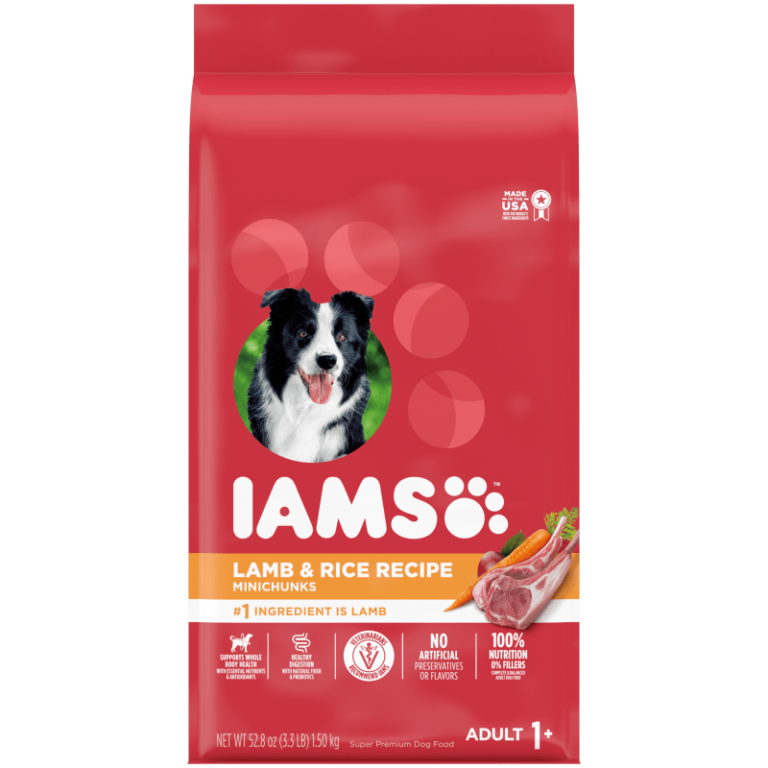Worms are not uncommon among dogs. They can get them through the eggs of other infected animals, including birds, rabbits, and rodents. But dogs don’t develop adult worms from eating the eggs. If your dog is roaming freely, it’s possible that it can get infected with these parasites by eating the eggs of other animals. As a result, you need to be vigilant about your pet’s activities and surroundings.
As a dog owner, you want the best for your furry friend. But there’s an uncomfortable topic many pet parents hesitate to discuss: intestinal parasites. Worm infestations are incredibly common in dogs of all ages, breeds, and living environments. Many puppies are born with worms or acquire them from their mother’s milk.
Understanding the signs of worms in dogs, how to treat them, and most importantly, how to prevent them, is essential for responsible pet ownership. In this comprehensive guide, we’ll explore everything you need to know about keeping your canine companion worm-free.
Common Types of Worms in Dogs
Dogs can be affected by several types of intestinal parasites, each with their own lifecycle and health impacts:
Roundworms
Roundworms are the most common intestinal parasite in dogs, especially puppies. These spaghetti-like worms can grow up to 7 inches long and live in the dog’s intestines. Most puppies are born with microscopic roundworm larvae that were transmitted from the mother before birth.
Hookworms
These blood-sucking parasites attach to the wall of the small intestine and can cause anemia, especially in young puppies. They’re smaller than roundworms but can cause more severe health issues. Hookworms can also penetrate human skin, causing a condition called cutaneous larva migrans.
Whipworms
These parasites get their name from their whip-like shape. They embed their thin front end into the dog’s intestinal lining, causing irritation and inflammation. Whipworm infections can be difficult to diagnose because the eggs are shed inconsistently.
Tapeworms
Dogs typically get tapeworms from ingesting infected fleas during grooming. You might notice small, rice-like segments around your dog’s rear end or in their bedding. These are tapeworm segments containing eggs.
Heartworms
While not intestinal parasites, heartworms deserve mention because they’re deadly if left untreated. They’re transmitted by mosquitoes and live in the heart, lungs, and associated blood vessels. Prevention is critical, as treatment is expensive and can be risky.
7 Warning Signs Your Dog Might Have Worms
How can you tell if your dog has worms? Look out for these common symptoms:
- Visible worms in feces or vomit: The most obvious sign is seeing worms in your dog’s stool or vomit. Roundworms look like spaghetti, while tapeworm segments resemble rice grains or cucumber seeds.
- “Scooting” behavior: If your dog drags their bottom across the floor or grass, it could indicate irritation from worms around the anus.
- Bloated belly: Especially common in puppies, a pot-bellied appearance can indicate a heavy worm burden.
- Weight loss despite normal appetite: If your dog is eating well but still losing weight, parasites might be stealing their nutrients.
- Dull coat: A once-shiny coat becoming dull and dry can indicate nutritional deficiencies caused by parasites.
- Lethargy: Unusual tiredness or decreased energy levels can stem from anemia caused by blood-sucking parasites like hookworms.
- Diarrhea or vomiting: Gastrointestinal upset, especially chronic or recurring, can be a sign of parasite infestation.
Not all infected dogs show obvious symptoms, which is why regular veterinary screening is crucial even for healthy pets.

Diagnosis: How Vets Detect Worms
If you suspect your dog has worms, a veterinary visit is necessary for proper diagnosis. Your vet will likely:
- Perform a fecal flotation test: This involves examining a stool sample under a microscope to look for parasite eggs.
- Check for physical symptoms: Your vet will examine your dog for telltale signs of specific parasites.
- Possibly run blood tests: For certain parasites like heartworms, blood tests are necessary for diagnosis.
Never attempt to diagnose or treat worms yourself without veterinary guidance, as incorrect treatment can be ineffective or even harmful.
Treatment Options for Dogs with Worms
The good news is that most worm infections are highly treatable. Once your vet has identified the specific parasite affecting your dog, they’ll recommend an appropriate deworming medication. Common treatments include:
Prescription Dewormers
Your veterinarian may prescribe specific medications based on the type of worms present. These might be:
- Oral tablets or chewable: Often given in one or more doses
- Liquid suspensions: Useful for very small dogs or puppies
- Injectable medications: Used in certain situations
Over-the-Counter Options
While some dewormers are available without prescription, they’re typically less effective than veterinary products and may not target all types of worms. Always consult your vet before using OTC dewormers.
Treatment Protocol
Complete elimination of worms often requires multiple treatments. This is because:
- Most dewormers kill adult worms but not eggs or larvae
- Follow-up treatments eliminate parasites that have matured since the initial treatment
- Some worms, like whipworms, are particularly persistent and require extended treatment
The Human Health Risk: Zoonotic Concerns
Some dog worms can infect humans, especially children, making parasite control an important public health issue:
- Roundworms can cause visceral larva migrans in humans, where larvae migrate through organs, potentially causing damage to the eyes, brain, or other tissues.
- Hookworms can cause cutaneous larva migrans, creating itchy, raised tracks in the skin as larvae migrate.
- Tapeworms can occasionally infect humans who accidentally ingest infected fleas.
To protect your family:
- Wash hands thoroughly after handling pets or cleaning up after them
- Keep children’s play areas free from animal waste
- Remove pet waste promptly from yards and public areas
- Prevent children from eating dirt or sand that might be contaminated
Prevention: The Best Approach to Worm Control
Preventing worm infestations is far easier than treating them. A comprehensive prevention plan includes:

Regular Veterinary Deworming
Follow your veterinarian’s recommendations for routine deworming, which typically includes:
- Puppies: Deworming every 2 weeks starting at 2 weeks of age until 12 weeks, then monthly until 6 months
- Adult dogs: Deworming 2-4 times per year, or more frequently based on lifestyle and risk factors
Year-Round Preventive Medications
Many monthly heartworm preventives also protect against common intestinal parasites. Options include:
- Oral chewable tablets
- Topical applications
- Injectable products (for heartworm prevention)
Environmental Management
Reduce your dog’s exposure to worm eggs and larvae by:
- Promptly removing feces from your yard
- Avoiding areas with high concentrations of dog waste
- Controlling pests like fleas and mosquitoes that can transmit certain parasites
- Preventing your dog from hunting or scavenging wildlife, which can carry parasites
Regular Fecal Testing
Even with prevention, regular screening is important:
- Annual fecal tests for adult dogs
- More frequent testing for puppies, elderly dogs, or those with high exposure risk
Natural Approaches to Worm Prevention
While not substitutes for veterinary care, some pet owners supplement conventional prevention with natural approaches:
- Food-grade diatomaceous earth: May help reduce parasite loads when added to food, though scientific evidence is limited
- Pumpkin seeds: Contains cucurbitacin, which may have some effect against certain parasites
- Coconut: Contains lauric acid, with some potential anti-parasitic properties
- Proper nutrition: A strong immune system helps dogs resist parasitic infections
Important note: Natural remedies should complement, not replace, veterinary-recommended prevention and treatment. Always discuss alternative approaches with your vet.
Special Considerations for Different Dogs
Puppies
Puppies are especially vulnerable to worms because:
- Many are born with roundworms
- Their immune systems are still developing
- They explore with their mouths, increasing exposure
- Heavy parasite loads can stunt growth and development
Regular deworming is critical for healthy puppy development.
Senior Dogs
Older dogs may have:
- Weakened immune systems, making them more susceptible
- Chronic conditions that mask parasite symptoms
- Difficulty tolerating certain medications
Discuss age-appropriate parasite control with your vet.
Hunting or Farm Dogs
Dogs with access to wildlife or livestock have increased risk due to:
- Exposure to parasite eggs in soil and water
- Predation of infected wildlife
- Contact with multiple animal species
These dogs often need more frequent deworming.
When to Call the Vet Immediately
While most worm infections aren’t emergencies, seek immediate veterinary care if your dog shows:
- Bloody diarrhea
- Severe vomiting
- Extreme lethargy
- Pale gums (indicating anemia)
- Difficulty breathing (possible with severe heartworm infestations)
- Seizures or other neurological signs
These symptoms could indicate a heavy parasite load or complications requiring urgent intervention.
Conclusion: A Healthy, Worm-Free Dog
Parasites are an unpleasant but manageable aspect of dog ownership. With regular veterinary care, appropriate preventive measures, and prompt treatment when needed, you can keep your canine companion healthy and comfortable.
Remember that parasite control isn’t just about your dog’s health—it’s also about protecting your family and community from zoonotic diseases. You’re being a responsible pet owner and community member by staying vigilant about worm prevention.
Does your dog have a history of worms? Do you have questions about parasite prevention? Share your experiences or concerns in the comments below!
Disclaimer: This article is for informational purposes only and does not constitute veterinary advice. Always consult your veterinarian for guidance on your pet’s specific health needs.
Tags: dog worms, parasite prevention, puppy deworming, dog health, pet parasites, intestinal worms in dogs, dog parasite symptoms








